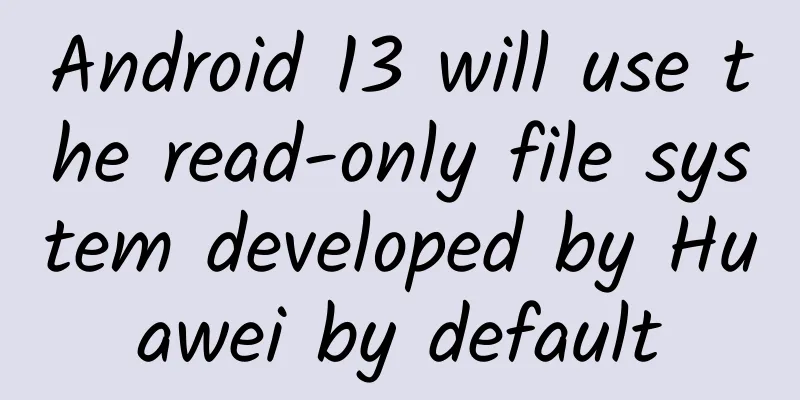Android 13 will use the read-only file system developed by Huawei by default

|
According to a recent report by Esper, the latest beta version of Android 13 includes a statement of two new features. The statement shows that Google is planning to introduce EROFS into Android 13, making it the default read-only file system. The file system was developed by Huawei. Compared with existing file systems, EROFS has obvious advantages, which can significantly save storage space and bring speed and performance improvements. EROFS is the acronym for Enhanced Read-Only File System, which was originally developed by Huawei. In mid-2018, EROFS was first introduced to the staging area of Linux kernel version 4.14. After a year of continuous development, the EROFS file system driver was merged into the mainline in Linux kernel version 5.4. EROFS was first released in EMUI 9.1 in 2019, and the first models to adopt this technology were Huawei P30 and P30 Pro. This is also Huawei's last flagship product series to support GMS. EROFS is different from other read-only file systems. It aims to build a new file management system to improve disk performance and speed while saving disk space to reduce unnecessary usage. According to Huawei, the random read speed of the EROFS file system can be increased by an average of 20%, and up to 200%, which greatly improves system efficiency compared to traditional EXT4. Google is only planning to use it as the default file system for read-only partitions, such as the partitions used by the Android system core. Since the system partition is usually read-only, compressing the system partition can reduce the space occupied to save space for files that only change when the system is updated. Although Google will enable the EROFS read-only file system in Android 13, it does not mean that all devices will automatically use it. This change will only affect devices that use the Android 13 system by default when they come out, and these devices also need to have GMS built in. Therefore, for users and manufacturers using AOSP, this change in Android 13 will not have any impact. This article is reproduced from OSCHINA Title of this article: Android 13 will use the read-only file system developed by Huawei by default Article URL: https://www.oschina.net/news/197361/android-13-huawei-erofs |
<<: The evolution and thinking of Taobao Native R&D model
>>: Apple closes verification channel: iOS 15.5 cannot be downgraded after upgrade
Recommend
In this astronomical "holy land", look for the interstellar glow
Author: Du Lian Audit│Ding Yi Editor: Zhao Jingyu...
Dismantle the virtual resource project operated through Baidu bidding. Mom can also operate it at home and earn 15,000 yuan a month
I have been operating this project for more than ...
How much does it cost to produce the Hami Movie Mini Program? Hami movie applet production price inquiry
In order to better penetrate into various industr...
Freestyle skiing is not so "free", but Gu Ailing is really cool...
Tadpole once again felt the disparity in the worl...
The river turned orange and was weirdly sour. What happened to Alaska?
Hello everyone, this is the 11th issue of the Env...
Problem record: Stripping of iOS user behavior statistics code
[[140437]] I have been working on a statistics mo...
Foreign media comment: Native Android is dead
Android M made its debut, and many developers wit...
The most complete! New product launch event process planning plan!
The most important thing about an event is to hav...
A comprehensive and detailed review of the 2015 first product, the Mele Cloud Box CTVB-1
2015 is the golden period of rapid development of...
Apple Dad’s 10 Marketing Skills That Won the “Outstanding Marketing Award”!
In the CMO Survey of global marketing executives,...
Google Glass: Die before its ambitions are fulfilled?
Recently, Google plans to close its four Basecamp...
AI is taking programmers' jobs: AI may replace programmers in 2040
Some experts at Oak Ridge National Laboratory in ...
How to operate an event well? Share two major tips!
Let’s talk about event operation today. Event ope...
By losing two tactics, NetQin has made a further strategic progress
Recently, Cheetah CEO Fu Sheng's article &quo...
High incidence in summer! Two lightning accidents in one week, please keep this lightning protection manual
Thunderstorms are frequent in summer, and two lig...









